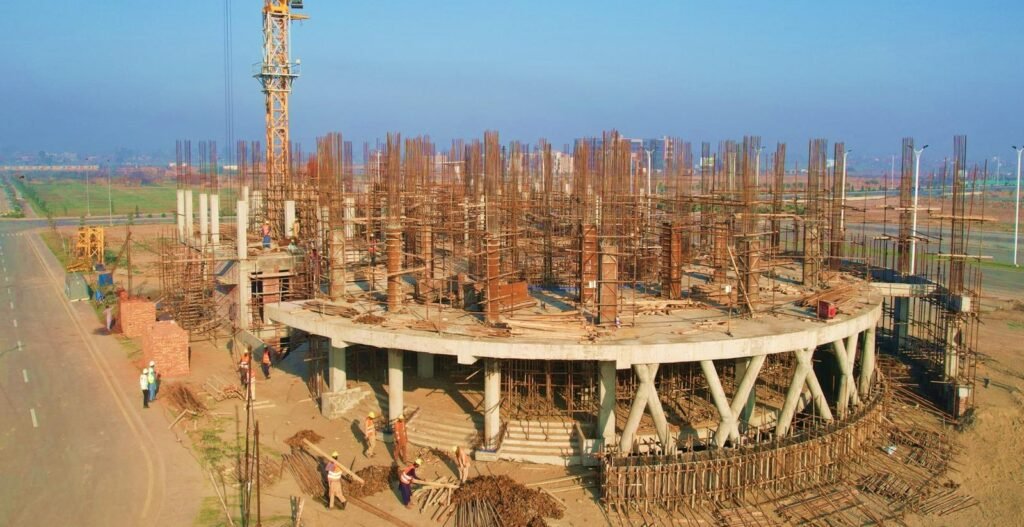A Pathway to Sustainable Lahore Smart City.
Introduction.

Integrated Urban Planning Of Lahore Smart City. Integrated urban planning (IUP) is a method of city development that emphasizes the creation of sustainable, inclusive, and efficient urban environments. This method integrates different aspects of city life, such as housing, transportation, energy, and public spaces, to create a cohesive, functional urban ecosystem. Moreover, integrated urban planning is becoming increasingly important to ensure that cities remain resilient and livable as they continue to grow. In this article, we will examine the benefits, principles, and examples of integrated planning as well as the challenges and solutions that come with this approach.
The Key Principles of Integrated Urban Planning.
In Lahore Smart City, The principles of integrated urban planning guide city planners to create harmonious, sustainable urban environments. These principles include:
1. Holistic Approach: Integrated urban planning takes into account the city’s entirety, instead of focusing only on its individual components. This approach recognizes the interconnectedness between urban systems and seeks to create synergy among them.
2. Collaboration and Stakeholder Engagement: Successful integrated planning requires collaboration between various stakeholders, including government agencies, private sector organizations, and local communities. By involving these stakeholders, you can ensure that different perspectives are taken into consideration in the planning process.
3. Sustainability and Resilience: Integrated urban planning places a high priority on sustainability and resilience. It aims to reduce environmental impacts, promote energy efficiency, and create cities that can adapt to external pressures and climate change.
4. Mixed-Use Development: This concept promotes the integration between residential, commercial, and recreational areas to reduce travel distances and encourage walking, biking, and public transport.
5. Smart Infrastructure and Technology: Integrated urban planning uses technology to create cities that are smarter, leveraging data and digital tools for the optimization of urban processes and the improvement of quality of life.
Benefits of Integrated Urban Planning.
Implementing integrated planning for urban areas can yield a variety of benefits, both for the city and its residents. Here are a few of the main advantages:
1. Enhanced Quality Of Life: Integrated Urban Planning creates cities with a higher quality of life, providing easier access to public transportation and green space, as well as a more convenient and pleasant place to live. It improves the well-being of residents and fosters a sense of community.
2. Reduced Environmental Impact: By promoting sustainable practices and reducing reliance on personal vehicles, integrated city planning lowers carbon emissions and other forms of pollutants. This contributes to a healthier and cleaner urban environment.
3. Improved Economic Opportunity: Integrated Urban Planning fosters economic growth through the creation of vibrant urban centers that attract businesses, tourists, and investors. This can result in job creation and a stronger local economy.
4. Increased Social Cohesion: The collaborative nature of integrated urban planning encourages social interaction and community engagement. This can foster social cohesion among residents and strengthen their sense of belonging.
5. Enhanced Resilience: Integrated urban planning can help cities become more resilient against shocks and stresses such as economic downturns or natural disasters. Cities can recover and withstand unexpected events by creating flexible and adaptive urban systems.
Examples of Integrated Urban Planning.
In many cities, integrated urban planning has been implemented successfully, demonstrating the potential for this approach to transform cities:
1. Curitiba (Brazil): Curitiba has a reputation for innovative urban planning, exemplified by its highly efficient Bus Rapid Transit (BRT) system and focus on green space. The integrated approach of the city has reduced traffic congestion and improved air quality.
2. Copenhagen, Denmark: Copenhagen is a global leader in sustainable urban planning, prioritizing green buildings, renewable energy, and cycling infrastructure. The city’s integrated approach has led to significant reductions in carbon emissions.
3. Singapore: Singapore’s integrated planning has contributed to its status as one of the cleanest and most efficient cities globally. The city-state boasts a comprehensive public transportation system, strict zoning laws, and innovative water management systems.
Integrated Urban Planning: Challenges and Solutions.
Certainly, here’s your paragraph with added transition words:
Despite its many benefits, integrated planning for urban development faces several challenges. However, to address these challenges, innovative solutions and a commitment to sustainable urban development are essential.
1. Coordination and Governance: Achieving the right coordination among different government agencies and stakeholders can be challenging. Nevertheless, cities can establish dedicated planning agencies or cross-sector committees to ensure effective cooperation.
2. Financial Resources: Integrated urban planning requires significant financial resources. Nonetheless, cities can seek funding through international organizations and public-private partnerships to support their projects.
3. Community Resistance: Some communities may resist changes associated with integrated urban planning, such as increased density or changes in land use. However, addressing residents’ concerns can be achieved through public consultations and participatory planning.
4. Technology Complexity: The application of technology to urban planning is complex and demands specialized knowledge. Nonetheless, cities can invest in technology training programs and partnerships with technology companies to build the necessary skills and knowledge.
The conclusion of the article is.
Integrated urban planning is a promising way to create resilient and sustainable cities. By adopting a holistic approach, cities can cultivate a harmonious and balanced urban environment. Furthermore, the benefits of integrated planning remain crucial in addressing the complex issues that cities face today. Additionally, as more cities embrace this strategy, the potential to create better urban environments is exponentially growing.
For more information: Smart City Lahore

